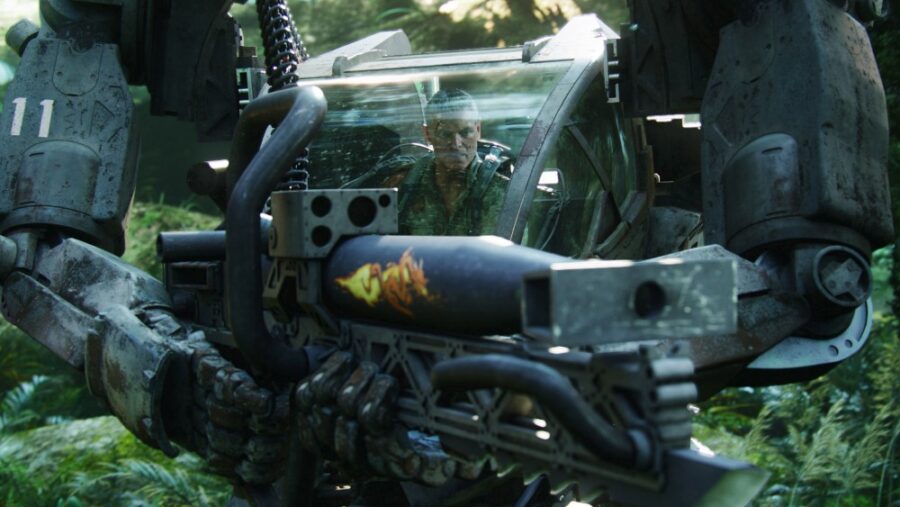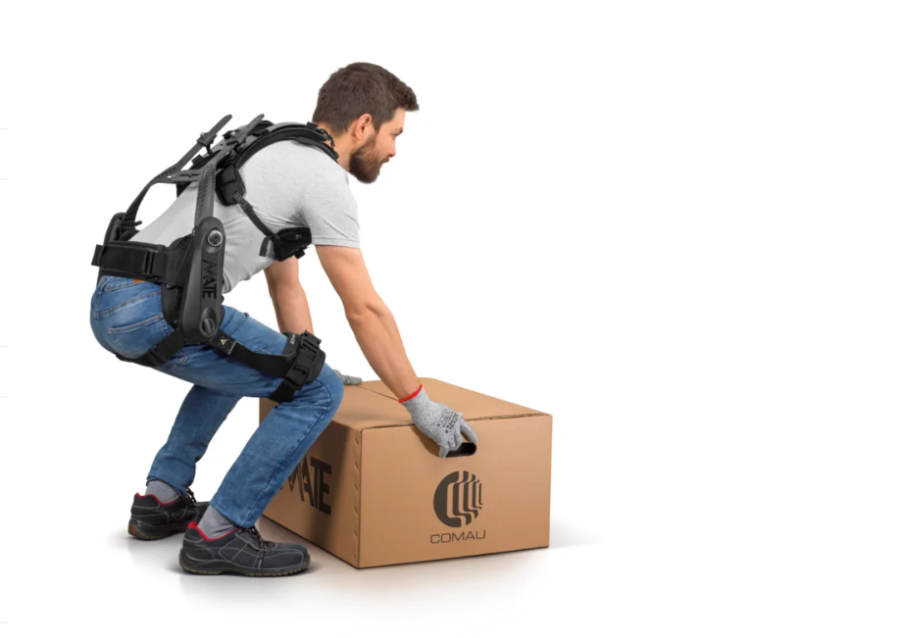Exoskeletons Take Huge Step Toward Becoming Common

Science fiction would appear to be becoming nonfiction in Europe. Indeed, in Italy, a groundbreaking pilot project involving real-life exoskeletons achieved exciting results. The Port System Authority of the Northern Tyrrhenian Sea and the Livorno Port Company reported marked advantages using the exoskeletal tech, developed by IUVO and Comau (a subsidiary of Stellantis).
Comau has engineered a wearable robotic exoskeleton to make manual labor much more manageable.
The success of the pilot program–and the data gained through it–serve as a major step toward integrating wearable robotics into everyday use. As expected, this technological leap is especially advantageous in physically demanding environments. Holistically speaking, it could revolutionize manual labor.
The primary focus of the study revolved around two specific models of exoskeletons: the MATE XT and MATE XB. The former is specifically intended to lessen muscle strain on the upper limbs during static (or repetitive) tasks. This makes it particularly beneficial for activities involving prolonged arm elevation.
On the other hand—no pun intended—the latter strives to alleviate muscle tension in the lower back area, a common issue when handling heavy loads.

Laborers reportedly adjusted well to the novel technology, additionally recognizing the exoskeleton’s significant impact on their efficiency and physical well-being.
The experiments involving the technology were conducted in real-time and in the workplace itself. Specifically, twelve workers at the Livorno port were equipped with these MATE exoskeletons over a six month period, incorporating the devices into their daily regimens. Rigorous field tests, focusing on thoroughly understanding the physical and operational benefits of employing these devices, were conducted.
The workers regularly undertook strenuous tasks: loading and unloading goods, relocating heavy loads, and securing containers onto ships. Without the sci-fi-reminiscent exoskeletons, these activities are notoriously exhausting. They also pose genuine risks of introducing musculoskeletal disorders.
The initial evaluations conducted by IUVO and Comau involved measuring muscle activity and gathering feedback through questionnaires–all to assess the perceived drop in fatigue. The findings were overwhelmingly positive. Laborers reportedly adjusted well to the novel technology, additionally recognizing the exoskeleton’s significant impact on their efficiency and physical well-being.
Based on the data, utilizing MATE XT and MATE XB technologies can potentially lessen the effort required by workers.
By how much? As much as thirty percent.
The technology represents a bonafide opportunity to enhance worker wellness through innovative, genuinely futuristic solutions.
Duilio Amico, CEO of IUVO and head of wearable technologies at Comau, underscored the significance of this project, describing it as one of the pioneering initiatives in Europe. The globally aimed venture, Amico conveyed, evaluates the tech’s effect on improving ergonomics and ensuring worker safety within port systems.
As far as experimental environments go, the Livorno Port is notably ideal for testing the exoskeletons.
It enjoys a prominent position as a major European seaport and is recognized as one of the significant points of merchant entry into the Mediterranean Sea. Given its considerable annual handling capacity, the port efficiently manages around 30 million tonnes of cargo, or approximately 700,000 TEUs annually. The port of Livorno also significantly impacts the local job market; it provides employment to over 15,000 workers.
The success and potential of these exciting devices surpass mere technological advancement. The technology represents a bonafide opportunity to enhance worker wellness through innovative, genuinely futuristic solutions. By integrating the devices into manual labor practices, the initiative could usher in a new era, one in which exoskeletons become commonplace.
The technology could, moreover, evolve into an indispensable component across numerous industries, eventuating safer, more efficient workplaces worldwide.
Source: Comau












